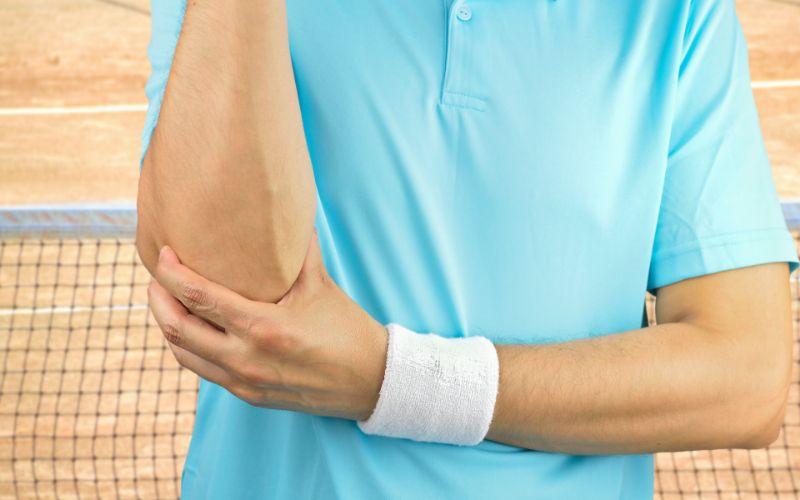Pickleball, a fast-paced and exciting racket sport, has gained immense popularity in recent years, drawing players of all ages and skill levels. While the game offers numerous health benefits and opportunities for socialization, pickleball injuries are not uncommon. Understanding the most prevalent injuries in pickleball, their causes, and preventive measures is crucial for players to stay safe and enjoy the game to its fullest.
Understanding Pickleball Common Injuries
Pickleball, often played on a small court with hard surfaces, involves quick movements, sudden stops, and repetitive motions. These characteristics contribute to a range of injuries that players may experience. Let’s delve into some of the most common pickleball injuries and explore ways to prevent and manage them effectively.
Shoulder Injuries
Shoulder injuries are among the top concerns for pickleball players, particularly due to the overhead swinging motion involved in serving and volleying. The rotator cuff muscles are susceptible to overuse and strain, leading to discomfort and limited range of motion. Without proper care, these injuries can worsen over time and impact performance on the court.
Achilles Tendon Strains and Ruptures
The Achilles tendon, a crucial structure in the lower leg, undergoes significant stress during pickleball play, especially during quick direction changes and explosive movements. Achilles tendon strains and even ruptures can occur, causing severe pain and requiring extensive rehabilitation.
Ankle Sprains
Ankle sprains are another common occurrence in pickleball, often resulting from sudden twists or missteps on the court. The lateral movements inherent in the game increase the risk of rolling or twisting the ankle, leading to ligament damage and instability.
Tennis Elbow (Lateral Epicondylitis)
Tennis elbow, or lateral epicondylitis, affects many pickleball players due to the repetitive gripping and swinging actions involved in the game. The forearm muscles undergo strain, leading to inflammation and pain on the outside of the elbow.
Knee Injuries
The knees endure significant stress during pickleball, especially during quick changes in direction and high-impact movements. Knee injuries, including sprains, strains, and even more severe damage to ligaments and cartilage, can result from overuse or sudden trauma.
Preventive Strategies for Pickleball Injury Prevention
Preventing injuries in pickleball involves a combination of proper technique, physical activity conditioning, and proper footwear. Here are some essential tips to minimize the risk of common pickleball injuries:
Warm-Up and Stretching
Before stepping onto the court, players should engage in a thorough warm-up routine that includes dynamic stretching exercises. Warm muscles are more pliable and less prone to injury. Incorporating movements that mimic those in pickleball can help prepare the body for the demands of the game.
Proper Technique and Body Mechanics
Learning and consistently applying proper pickleball techniques can significantly reduce the risk of injury. Players should focus on maintaining good posture, using the correct grip, and executing strokes with proper body mechanics. Seeking guidance from a qualified instructor can help refine technique and prevent unnecessary strain on muscles and joints.
Strength and Flexibility Training
Incorporating strength and flexibility exercises into a regular fitness regimen can enhance overall performance and resilience on the pickleball court. Targeted exercises that strengthen major muscle groups, including the hamstrings, hip flexors, and shoulders, can improve stability and reduce the likelihood of injury.
Footwear Selection
Choosing the right footwear is paramount for pickleball players. Court shoes with excellent cushioning and support can absorb shock and provide stability during lateral movements and sudden stops. Investing in quality tennis shoes designed for multi-directional movement can help protect the feet and ankles from strain and injury.
Gradual Progression and Rest
Avoiding overuse injuries requires a balanced approach to training and gameplay. Players should gradually increase intensity and duration while allowing adequate time for rest and recovery between sessions. Incorporating rest days into the schedule allows the body to heal and adapt to the demands of pickleball play.
Treatment and Rehabilitation Approaches
Despite the best preventive efforts, pickleball injuries may still occur. Prompt and appropriate treatment is essential for minimizing pain, promoting healing, and preventing further damage. Here are some common treatment modalities for pickleball-related injuries:
Rest, Ice, Compression, and Elevation (RICE)
The RICE protocol is a fundamental approach to managing acute injuries in pickleball and other sports. Resting the injured area, applying ice packs, using compression bandages, and elevating the affected limb can help reduce pain and inflammation in the early stages of injury.
Physical Therapy and Rehabilitation
For more severe pickleball injuries, physical therapy plays a crucial role in restoring function and mobility. A skilled physical therapist can develop personalized exercise programs to strengthen weakened muscles, improve flexibility, and enhance proprioception. Manual therapies, such as massage and joint mobilization, may also aid in the recovery process.
Immobilization and Supportive Devices
In cases of ligament sprains or tendon tears, immobilization with braces or splints may be necessary to facilitate healing and prevent further injury. Supportive devices, such as ankle braces or elbow sleeves, can provide stability and protection during the early stages of rehabilitation.
Surgical Intervention
In rare instances of severe pickleball injuries, surgical repair may be indicated to restore structural integrity and function. Surgical options vary depending on the nature and extent of the injury, with procedures ranging from arthroscopic interventions to tendon reconstruction.
Gradual Return to Play
Returning to pickleball after an injury should be a gradual process guided by medical professionals and physical therapists. Players should listen to their bodies and avoid pushing through pain or discomfort. Implementing modifications to gameplay and gradually increasing intensity can help prevent reinjury and facilitate a safe return to activity.
Conclusion
Pickleball injuries are a common concern for players of all levels, but with proper awareness, injury prevention strategies, and prompt treatment, individuals can continue to enjoy the game safely and effectively. By understanding the most common pickleball injuries, implementing preventive measures, and seeking appropriate care when needed, players can minimize risk and maximize their longevity on the court. Remember, prioritizing health and safety ensures that pickleball remains a fun and fulfilling activity for years to come.




